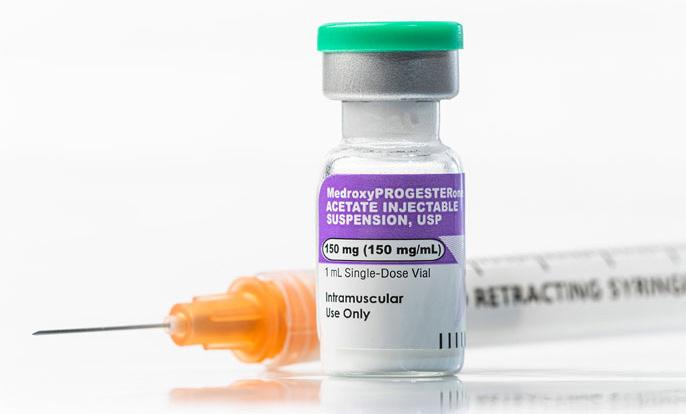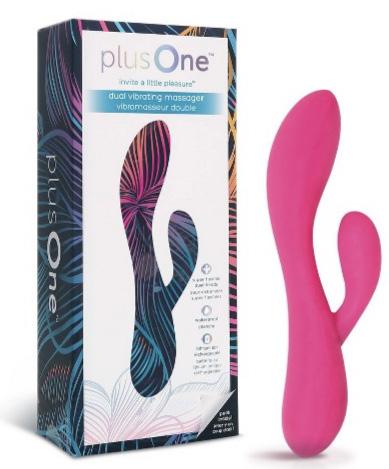Sexual Health Newsletter
Spring 2024 presented by SHARE
Sexual Health And Reproductive Education





We'd liketoS.H.A.R.Ealewthoughts:
m
raJ • KISS • EXJrrBSS O r n-orat leastIt Id
• Tovsarer rsex mv• TOUCH • s re


• ro ctv


............,, evc n Is a Ila • sexu slesare rmal sell ro a aandchocolate tochoosefrom.tryotherna ors
01 It'smoref
s
• IAUBH • ealsex
• c ee ra oc ms • Yo eI Jma WIUIOIII nusex I • II
• sex t yours If a dway
totakecareofV
• RESPECT • S8lotsof V d
m
time rt ht • sexIsm re an rga m •
• Mailo re tIsDllblal• IOVE •Ex r VO et • MalleU
It V • PIAY
t r
• Em ace aldecl o m u
• Educate ourselfI
IIIIIISU'I
Some of the most popular methods of contraception used by college students
• Small “T” shaped device that is inserted by a medical provider inside the uterus
• Copper T releases copper, others release small amounts of progestin to prevent pregnancy
• Effective for 8-12 years
• Failure rate 0.1-0.4%


• Single thin rod “matchstick” that is inserted under your skin in the upper arm.
• Releases progestin over a three year time period
• Failure rate 0.1%
• Full of progestin
• Usually given in the buttocks or arm every three months
• Failure rate 4%




• Short-Acting Hormonal Method
• Combined oral contraceptives contain the hormones estrogen and progestin, or just progestin in it.
• It works to suppress ovulation.
• In order for the pill to work effectively, it needs to be taken around the same time everyday.
• The typical failure rate is 7%.
Plus The Patch, The Ring
A contraceptive method, by definition, prevents pregnancy by interfering with ovulation, fertilization or implantation. Abortion ends an established pregnancy, after implantation.
Good Resources for Contraception:
• Cutler Health Centerright on campus.
• Northern Light Primary Care Orono, ME 04469 207-581-4000
• Mabel Wadsworth Center 700 Mt Hope Ave #420 Bangor, ME 04401 207-947-5337
• Bangor Family Planning 68 Mt Hope Ave Bangor, ME 04401 207922-3222
We recommend this online resource for information on contraception

https://www.bedsider.org/
Things happen. A condom breaks. You forget a Pill. Sometimes you need Emergency Contraception - a safe and effective way to prevent a pregnancy within the first few days of unprotected sex. It’s also known as “the morning after pill” or “Plan B,” you can get it without a prescription at Cutler or your local pharmacy.
The FDA has approved the first over-the-counter option of birth control. This pill (which is progestin only) is named “Opill” and will be available in early 2024 in drug stores, convenience stores, grocery stores, and online. This will significantly improve access to needed healthcare.
Are you hoping to become pregnant in the next year?
If not, here are some questions to consider when choosing a method of contraception:
1.Is it important that there be no side effects?
2.How often do you engage in sexual intercourse?
3.Do you want sex to be spontaneous?
4.Do you remember to do things easily?
5.Who do you think should be responsible for contraception?
6.Who is your partner - are they free of STIs?
7.Have you thought about what you’d do if you were involved in an unplanned pregnancy? (No method, except abstinence, is 100% effective.)
A condom covers the penis and acts as a barrier during vaginal, anal, or oral sex.

Condoms are...
• Simple and safe to use
• Small and easy to carry
• Inexpensive (and often free around campus) and easily available
• Able to protect against unwanted pregnancies and STIs
• Typically made of latex, although also available in polyurethane.
• Effective when used correctly and consistently
• That you are responsible when it comes to your health
• That you care about your partner’s health
• That you are mature enough to realize an unplanned pregnancy or STI can impact your life
1. Don’t be silly, protect your Willie
2. When in doubt, shroud you spout
3. Don’t be a loner, cover your boner
4. You can’t go wrong, if you shield your dong
5. It will be sweeter if you wrap your peter
6. If you go into heat, package your meat
7. Don’t make a mistake, cover your snake
8. Sex is cleaner with a packaged wiener
9. if you can’t shield your rocket, leave it in your pocket
10. No glove, no love
Some other names for condoms:
• Rubber
• Nightcap
• Wetsuit
• Jimmy

Sexually Transmitted Infections (STIs) can sometimes present without any obvious symptoms. To confirm the presence of an STI visit a medical provider for an exam and testing.
Here are five ways you can acquire an STI without realizing it:
1. Asymptomatic Infections: Many STIs, such as chlamydia, gonorrhea, and human papillomavirus (HPV), can present without noticeable symptoms.
2. Lack of Regular Screening: If you do not regularly get screened or tested for STIs, you may be unaware of your infection status. Testing is important if you are sexually active or have changed partners.
3. Transmission from an Infected Partner: Engaging in sexual activities with someone who has an STI (they may not realize it or have any symptoms) increases your risk of acquiring the infection.
4. Having Unprotected Sex: Failure to use barrier methods such as condoms or dental dams increases the risk of STI transmission. Condoms, when used correctly, provide protection against many STIs.
5. Lack of Communication: A lack of honest communication about sexual health with your partner can lead to unknowingly acquiring an STI. It is important to discuss sexual histories, past STI testing, and consider getting tested together to ensure both partners are aware of their STI status.
Remember, if you’re sexually active, the most effective ways to reduce the risk of acquiring an STI is to practice safer sex, get screened regularly, and communicate openly about sexual health issues with your partner(s).
Anybody who has oral sex, anal sex, vaginal sex, genital skin-to-skin contact, or who shares sexual fluids with another person can get STIs.
All STIs can infect your genitals. Vaginal or anal sex without a condom can spread things like chlamydia, gonorrhea, herpes, HPV, and syphilis. Some STIs can also infect your lips, mouth, and throat. Oral sex without a condom or dam can spread STIs as well.
There are lots of ways you can make sex safer. One of the best ways is by using a barrier — like condoms, internal condoms, dams, and/or latex or nitrile gloves — every single time you have oral, anal, or vaginal sex, or do anything that can pass sexual fluids (e.g., sharing sex toys). Barriers protect you and your partner from sexual fluids and some skin-to-skin contact, which can both spread STIs.
Beyond the condom used to cover the penis, consider:
Internal Condom/Female Condom
• Instead of worn over the penis, this is inserted into the vagina.
• The FDA approved it for vaginal use, however, it has also been used Dam off-label for anal sex.
• When used vaginally they offer pregnancy protection as well as STI protection
• They are made from a soft plastic material called nitrile.
Dam
• A dam is a square piece of latex used during oral sex.
• If a dam is not on hand, a condom can be cut open to act as a dam. You can also use plastic wrap.
• A dam is placed between the mouth and vagina or anus to help protect against the transmission of fluids.
Latex gloves
• They can prevent fluids from getting into unnoticed cuts on your hands.
• Latex gloves help protect the delicate vaginal tissues from rough or freshly manicured nails.
1.How would you handle it if your partner didn’t want to use any protection?
2.How would you convince someone who’s hesitant to use a condom?
3.How could our society increase condom usage among sexually active people?
4.What were you taught in school about condoms? e.g. How to use a condom?
5.Should condoms be freely available in schools?
6.What would you think of someone who carries a condom with them?
7.Why do you think some people don’t use condoms?
8.At what point in a relationship should condoms be brought up?

Five reasons why masturbation is so important...
1. To feel good. Self-pleasure can be as simple as a way to feel good, or a way to relieve stress after a long day of classes, masturbating causes your body to release a number of hormones. One of these hormones is dopamine, the “happiness hormone.”
2. To discover yourself. Spending time with yourself can help you learn about your body and what feels good to you.
3. To benefit your everyday life. Masturbating not only relieves stress, but it can also improve sleep, and increases your focus (think about studying for that exam!)
4. To improve your sex life. When learning about your body and knowing what feels best to you, you’ll find it easier to communicate your desires with your intimate partner. You also have a higher chance of reaching orgasm during sex.
5. To get the health benefits. It’s known to ease pain - like menstrual cramps, and it’s been associated with a lower risk of prostate cancer.
A sampling of slang terms for female masturbation:
1. Jilling Off
2. Feeding the mouth
3. Reading Braille
4. Flicking the bean
5. Finger fun
6. Making The Kitty Purr
7. Praising the Orchid
8. Surfing at Finger Beach
9. Flipping through the pages
10. Strumming the chords
A sampling of slang terms for male masturbation:
1. Jacking Off
2. Fisting your mister
3. Spanking the monkey
4. Playing five against one
5. Painting your ceiling
6. Squeezing the lemon
7. Choking the chicken
8. Jerkin’ the gherkin
9. Consulting Dr. Jerkov
10. Cleaning your rifle
Using a vibrator isn’t necessary - but it can be fun. There are plenty of of benefits! Vibrators can increase arousal, and lead to stronger, more intense orgasms. Used alone or with a partner, they can add some spice to the interaction. And research shows that those who use vibrators report feeling greater sexual desire.
A student asked, “Can I get addicted to my vibrator?” No, but if you need to have an addiction, this would certainly be a good one to have!
The vibrator was invented in 1869 as a treatment for “hysteria” or mysterious “female disorders.” Doctors used a massager to massage her genitals with the goal of inducing “hysterical paroxysm,” the Victorian term for orgasm.



Buying a vibrator: Shop online or visit Adam & Eve on Broadway in Bangor www.adameve.com



1. The clitoris is the pleasure center of the vulva.
2. It doesn’t have a central role in reproduction like the penis or vagina - it’s pretty much just there to feel good!
3. If you want to address the clitoris, labia and vagina together, “vulva” is the appropriate term.
4. Most women (50%-75%) need clitoral stimulation in order to reach orgasm.
5. The clitoris is only partially visible to the naked eye. The clitoris is actually close to four inches in length but three-fourths of it is hidden from view within a female body. See diagram.
6. The clitoris contains over 8,000 nerve endings, double the nerve endings in the glans of a penis.
7. The clitoris is designed to bring a woman pleasure. That is its sole purpose. Not reproduction.
8. Yes, there are all kinds of orgasms. Vaginal, cervical and G-spot orgasms do exist, but they are much harder for most women to achieve than a clitoral orgasm. Very few women are able to achieve an orgasm without any kind of clitoral involvement.
A few good books to learn more about the clitoris:
• The Clitoral Truth: The Secret World at Your Fingertips by Rebecca Chalker
• Becoming Cliterate: Why Orgasm Equality Matters - And How to Get It by Laurie Mintz
• Come As You Are: Revised and Updated: The Surprising New Science That Will Transform Your Sex Life by Emily Nagoski

Check out SHARE’s new video, What is THIS? A film about the little known clitoris

https://www.youtube.com/watch?v=XvSE2

Questions to ask if you’re interested in someone...
1.What’s your idea of a fun date?
2.What are your thoughts on being exclusive?
3.Have you ever been in love?
4.What are your thoughts on meeting people on dating apps?
5.How do you feel about kissing on the first date?
6.What are you looking for in a relationship?
7.What do you look for in a romantic partner?
8.Do you picture meeting someone at school?
Questions to ask if dating/getting to know someone...
1.What are your thoughts on dating more than one person at a time
2.Tell me about your hobbies.
3.What would a great date look like to you? How about an awful one?
4.Where do you see yourself in one year, three years, 10 years?
5.What are your thought on commitment/marriage?
6.What are your thoughts on having children
7.What do you consider cheating?
8.What is your favorite type of food
Questions to ask to get their thoughts on various sexuality issues
1.Do you think there is enough education on LGBTQ+ issues?
2.How do you feel about abortion rights?
3.If there was a birth control pill for men, how would that change things?
4.Do you think students should be concerned about STIs?
5.Why do some people have trouble being honest when talking about sex?
6.What do you think when you hear “we are sex saturated but sex silent”?
7.What are your thoughts on pornography?
8.Why are some people uncomfortable talking about sexual pleasure?
Wilde Stein: Queer Straight Alliance https://umaine.edu/umsg/organization/wildestein-queer-straight-alliance/ Celebrating their 50 year anniversary! It provides an inclusive, accepting, safe space to LGBTQ+ community members and allies on campus
Rainbow Resource Center (RCC) https://umaine.edu/lgbtq/rainbow-resource-center/ The RRC is a safe space on the University of Maine’s campus for LGBTQ students and allies. Located in the Memorial Union in Room 224 (near the info desk), the RRC is a great place to hang out and meet new people
The LGBTQ+ Council - through the Student Life office https://umaine.edu/studentlife/ lgbtq-allies-council/ The council is made up of representatives from across campus (faculty, staff, and students) and its mission is to promote a safe and inclusive environment for our campus community through education, engagement, and advocacy.

Some UMaine students experience an unintended pregnancy and choose to terminate the pregnancy. In Maine, as in many states, abortion is still a legal and safe option for ending a pregnancy - despite the Supreme Court overturning Roe v Wade last June 2022.
Two common types of abortion procedures include:
1.Medication Abortion (sometimes referred to as the “abortion pill)”: This type of abortion involves the use of medication to induce a miscarriage early on in the pregnancy. It is generally used within the first 11 weeks of pregnancy (from the first day of your last period). The process involves taking two different medications. The first medication, mifepristone, ends the pregnancy by blocking the hormone progesterone needed to maintain pregnancy. The second medication, misoprostol, is taken usually within 48 hours; it helps the uterus contract and expel the pregnancy tissue. The person experiences a heavy period, including bleeding and cramping. Medication abortion is available in clinics or via telehealth.
2.Aspiration Abortion (sometimes called “in-clinic abortion”): This procedure is performed in a clinic and may involve 2-4 hours of time, even through the procedure itself takes only a few minutes. After numbing the area, the cervix is dilated and a gentle suction is used to remove pregnancy tissue from the uterus. It’s normal to experience some cramping or discomfort shortly after.
For more information or to schedule a procedure, contact
• Mabel Wadsworth Center in Bangor
• Maine Family Planning in Augusta 207-922-322
• Planned Parenthood in Portland 207-797-8881
We want you to get accurate information. Please beware of fake clinics that are antiabortion and provide misinformation. For example, one such clinic is in Bangor: First Step Pregnancy Resource on Mt. Hope in Bangor.
Learn more about our past from Grandmothers for Reproductive Rights (GRR)
https://grandmothersforreproductiverights.org/
